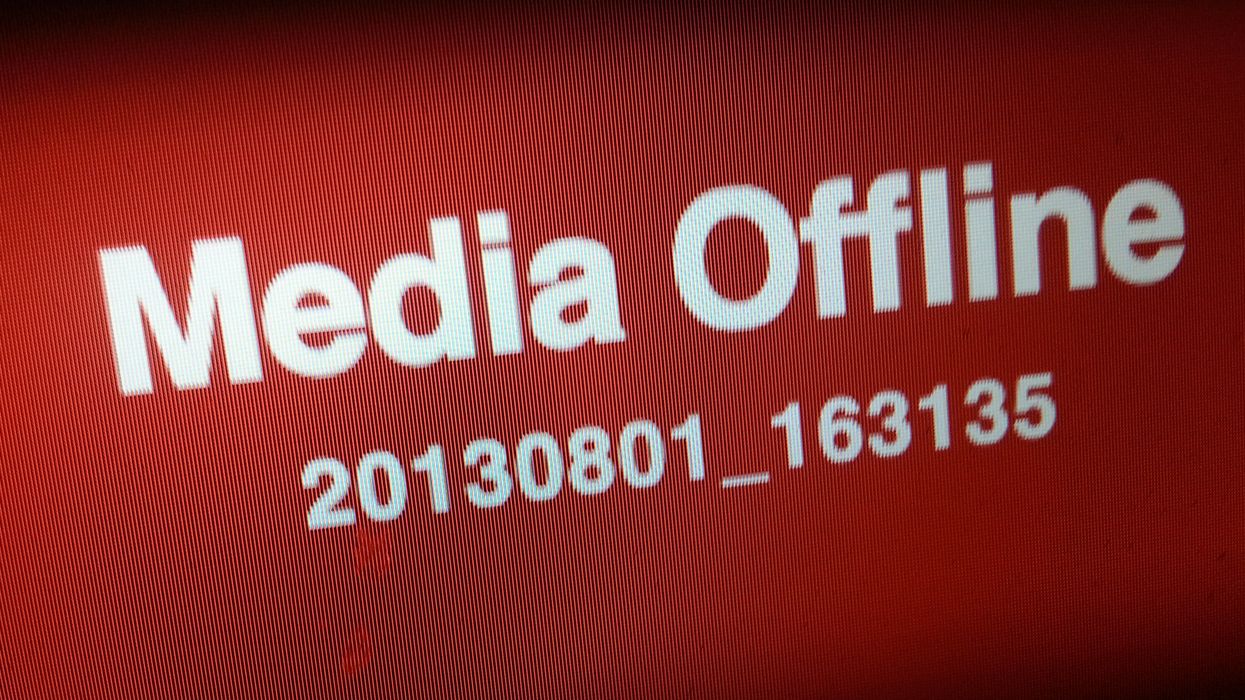Perfect by Proxy: A Brief Look Into What 'Offline/Online' Means

It's not hard to get precious about pretty much everything in filmmaking. There's one thing coming off the set, though, that's more valuable than anything else -- the film. It has long been preferable to treat the camera negative like the delicate, precious amalgam that it is by editing a place-holder version in lieu of damaging the original. In some fashion or another, this concept has followed editors through post production for much of filmmaking history. Even in the digital realm, it may sometimes be preferable to edit "offline" before conforming to "online" for striking the "master print." Read a bit more into the fundamentals of the offline/online below.
Filming Editing with Workprints -- The "OG of O/O"
The core concept of offline editing has existed in filmmaking forever -- the process simply wasn't referred to as such until more recently. Back in the old days, editors made their physical cuts to roughly processed positives to avoid the risk of harming the original camera negatives. These workprints were the rough-and-ready versions that editors could dig into, enabling them to really get their hands dirty while assembling a cut. They wouldn't have to worry about ruining anything permanently while exercising what might otherwise be destructive trial-and-error.
The workprints were of a lesser quality than the full potential held within the negatives, but that didn't matter so much. As long as they were decent enough for the editor to judge a shot's usability, they didn't have to look amazing. And since they were struck from the original negatives, these "offline" prints -- or proxy versions -- directly corresponded to the originals, down to the frame address. (Note, these terms weren't in play until tape was brought into the picture, but I use the terms here to illustrate analogously.)
Once the edit was approved, the negative editor would duplicate the necessary splices to the original negatives (not a job I'd ever want,) conforming the edit decisions "online." Finally, the beautiful potential promised by the negatives could be carefully extracted for a master, with no time wasted on developing fodder for the cutting room floor.
Up to the Present
Between all that and today, pretty much every conceivably combination of offline/online processes has been used for various formats -- if in spirit and not in name. Film-for-film (as above,) tape-for-film (early Avid,) file-for-tape (proxy-based tape capture, see below,) file/film (digital telecine as proxy,) file/file (see below.)
It's all been done, and the process can make quite a bit of sense depending on the challenges presented by a given format. Usually, the choice to edit offline stems from the prohibitive nature of working with original-quality material directly for one reason or another.
Here's a great example of more current offline/online workflows from CreativeCOW. Aside from making the basics pretty tangible, the tutorial also illustrates why major productions and post houses needn't be the only ones benefitting from such a process:
In Essence
Sometimes working offline is a necessity -- a proxy/conform workflow theoretically allows anyone to cut footage from any camera system freely, regardless of their computer's shortcomings, while still retaining the full quality potential for when the edit is complete. The machine that I've been using to play around with Magic Lantern RAW video, for instance, quivers in its boots when confronted with the task of real-time CinemaDNG debayering for playback. With an offline/online workflow, I can be light on my feet and cut the hell out of mountains of proxy files, but create a color grade with the robust flexibility of RAW originals. (More on this later.)
For those interested in more old-school offline/online tools of the decidedly hardware-based variety, go here. And I thought trying to debayer in real-time was bad for my editing health -- in our file-based era, it's certainly much easier to accomplish this type of process than it used to be!
What formats have you traversed out of offline editing necessities? How have newer camera systems, computers, and media formats changed the way you workflow? Will future computer hardware make offline editing extinct?
Link: The Museum of Early Video Editing Equipment and Techniques -- fsinet


 Richard Gere and Uma Thurman in 'Oh, Canada' via Kino Lorber
Richard Gere and Uma Thurman in 'Oh, Canada' via Kino Lorber  Uma Thurman in 'Oh, Canada'via Kino Lorber
Uma Thurman in 'Oh, Canada'via Kino Lorber 









